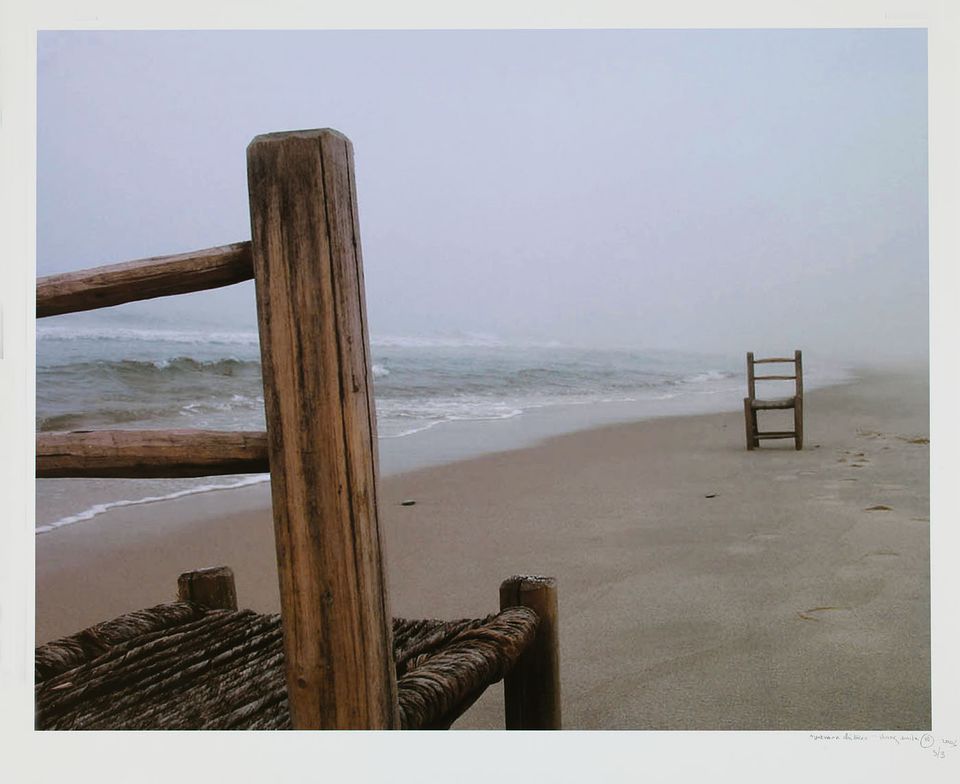
How does it feel to leave your homeland and settle in a new country? In this blog post, curatorial assistant Florencia Bazzano-Nelson explores how one immigrant artist, iliana emilia garcía imagines her ongoing ties to her native county of birth. García’s photograph, Unknown Distances, will be featured in the upcoming exhibition, Our America: The Latino Presence in American Art, which opens on October 25, 2013, along with other works that explore the epic theme of migration.
Dominican-born artist iliana emilia garcía has chosen the chair as a key subject in her work. One of the most enduring icons in modern and contemporary art, the chair has become a richly coded sign capable of transmitting multiple meanings. These may range from the lonely melancholia of Van Gogh’s Gauguin’s Chair, to the conceptual matter-of-factness of Kosuth’s One and Three Chairs, or the poignant recognition of the voiceless migrant of Doris Salcedo’s installation 1550 Chairs Stacked Between Two City Buildings. In her photographic series titled Unknown Distances/Undiscovered Islands, garcía recognizes the ability of this icon to also address emotional and geographic displacements.
Garcia, who trained as an artist both in her native Dominican Republic and in New York City, has featured the chair in her work since the 1990s. Whether represented in painting, drawing, photography or three-dimensional installations, this motif allows garcía to explore not only psychological and spiritual states but also social and cultural interactions. The human scale of the chair and its inherent connection to the sitter has encouraged artists like garcía to anthropomorphize this ubiquitous object.
Each photograph in series captures a chapter in an open-ended narrative about migration. garcía’s eloquent chairs behave like two characters in a photo-novel. They come together by the seashore, pull apart, and stand their ground on the wet sand. They look at the ocean, an archetypal image for an artist raised on an island, or turn inland as if to consider home or family. These two chairs enact the heartbreaking tension created by the desire for unknown worlds and the lure of the familiar. One chair braves the sea and one stays behind, their fluid chain of interactions frozen into moments of heightened emotional tension. She printed her photographs on canvas, which lends them a soft, romantic quality.
The inanimate but soulful actors in Unknown Distances/Undiscovered Islands are made of humble materials that are culturally suggestive. The roughhewn wood, the simple-turned slats, and straw-bottomed chairs seen in garcía’s series are modeled after the most popular chair style in Latin America. Of European origin but made with local materials, this type of rustic chair serves as an effective symbol of cross-cultural adaptation and survival. The fact that garcía took these photographs in Montauk, New York, indicates that she chose these culturally-coded chairs to suggest the multifaceted story of migration, not only from Europe to Latin America, but from the Caribbean to the United States.




















